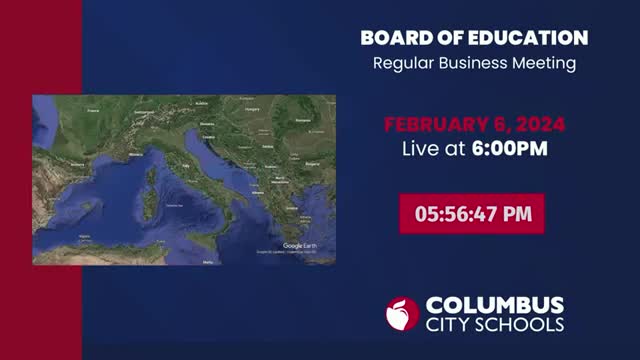Columbus students partner with universities to capture invasive wall lizards
February 07, 2024 | Columbus City School District, School Districts, Ohio

This article was created by AI summarizing key points discussed. AI makes mistakes, so for full details and context, please refer to the video of the full meeting. Please report any errors so we can fix them. Report an error »

In the heart of Columbus, a unique environmental project is unfolding, sparked by an unexpected invasion. It all began in the 1950s when a young boy, on a family vacation in Italy, brought home ten common European wall lizards to Cincinnati. Over the decades, these lizards thrived, and their population surged, eventually making their way to the parking lot of Columbus Downtown High School.
As these lizards establish themselves in a new environment, concerns grow about their potential impact on Ohio's native wildlife. Invasive species like these can disrupt local ecosystems, posing a threat to the delicate balance of nature. However, students at Columbus Downtown High School are seizing the moment to turn this challenge into an educational opportunity.
Working alongside experts from Ohio Wesleyan University, Ohio State University, and the Ohio Division of Wildlife, junior and senior students in Mr. Hitoskie's environmental science classes are actively engaged in capturing and studying these lizards. Trained by specialists Greg Lipps and Eric Gangloff, the students have learned essential techniques for safely capturing and handling the invasive species.
"This is a unique opportunity," Mr. Hitoskie explained. "Very rarely do we catch an invasive species before it spreads far out. Once it spreads throughout the city of Columbus, we won't be able to do anything about it. But here, it's just in one little location, giving us a chance to try to capture them all and prevent further spread."
To aid their efforts, the students have removed vegetation around the parking lot, making it easier to spot and capture the lizards that previously found refuge in the underbrush. This proactive approach not only helps protect the local ecosystem but also provides students with hands-on experience in environmental science.
As the project continues, the students are not just learning about invasive species; they are also becoming stewards of their environment, taking action to safeguard the natural world around them. Their work serves as a reminder of the importance of community involvement in addressing ecological challenges, and it highlights the potential for education to inspire future generations to protect their local ecosystems.
As these lizards establish themselves in a new environment, concerns grow about their potential impact on Ohio's native wildlife. Invasive species like these can disrupt local ecosystems, posing a threat to the delicate balance of nature. However, students at Columbus Downtown High School are seizing the moment to turn this challenge into an educational opportunity.
Working alongside experts from Ohio Wesleyan University, Ohio State University, and the Ohio Division of Wildlife, junior and senior students in Mr. Hitoskie's environmental science classes are actively engaged in capturing and studying these lizards. Trained by specialists Greg Lipps and Eric Gangloff, the students have learned essential techniques for safely capturing and handling the invasive species.
"This is a unique opportunity," Mr. Hitoskie explained. "Very rarely do we catch an invasive species before it spreads far out. Once it spreads throughout the city of Columbus, we won't be able to do anything about it. But here, it's just in one little location, giving us a chance to try to capture them all and prevent further spread."
To aid their efforts, the students have removed vegetation around the parking lot, making it easier to spot and capture the lizards that previously found refuge in the underbrush. This proactive approach not only helps protect the local ecosystem but also provides students with hands-on experience in environmental science.
As the project continues, the students are not just learning about invasive species; they are also becoming stewards of their environment, taking action to safeguard the natural world around them. Their work serves as a reminder of the importance of community involvement in addressing ecological challenges, and it highlights the potential for education to inspire future generations to protect their local ecosystems.
View full meeting
This article is based on a recent meeting—watch the full video and explore the complete transcript for deeper insights into the discussion.
View full meeting
